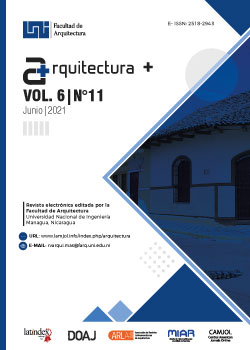The effects of the street network on people’s travel behaviour
DOI:
https://doi.org/10.5377/arquitectura.v6i11.11722Keywords:
Travel behaviour, street network, urban form, modal choice, connectivity, physical characteristicsAbstract
This research aimed to explain the influence of street network aspects such as connectivity and physical characteristics of streets on travel behavior among residents of the neighborhoods along the Masaya Highway in Managua, Nicaragua. The methodology implemented was mixed, collecting qualitative and quantitative data. Questionnaires were given to the residents of the area and statistically analyzed, semi-structured interviews were done with urban experts, and geographical analyses with maps were carried out, these were the main analysis methods applied. The results of the inferential analysis showed a significant relationship between connectivity and the street’s physical characteristics, with the modal choices residents made. However, when comparing the four areas of study, the location of residency marked a difference in people’s travel behavior.




















